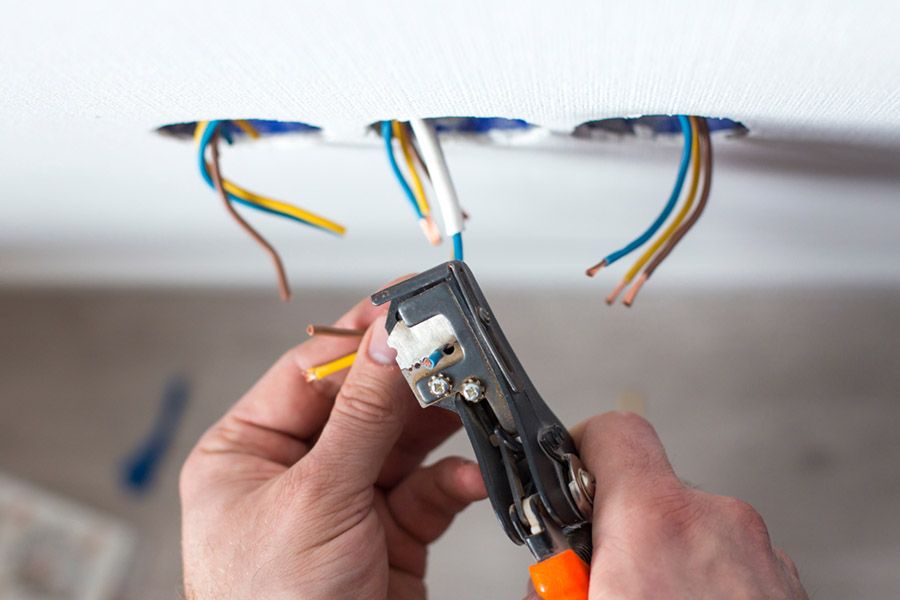
A cable stripper is a tool used to remove the insulation from electrical wires and cables. It is an essential tool for any electrician, but it can also be useful for other professionals who work with wires and cables, such as IT technicians, maintenance workers, and hobbyists.
There are many different types of cable strippers available, each with its own advantages and disadvantages. This buyer's guide will help you choose the right cable stripper for your needs.
What does a cable stripper do?
A cable stripper works by cutting through the insulation of a wire or cable without damaging the internal conductor. This allows the internal conductor to be exposed, which is necessary for making electrical connections.
Cable strippers can be used to strip a variety of different types of wire and cable, including solid wire, stranded wire, coaxial cable, and Ethernet cable.
Advantages of using a cable stripper
There are several advantages to using a cable stripper over other methods of stripping wire, such as using a knife or pliers:
- Cable strippers are much faster and more efficient than other methods.
- Cable strippers are less likely to damage the internal conductor of the wire or cable.
- Cable strippers can be used to strip a variety of different types of wire and cable.
Different types of cable strippers
There are several different types of cable strippers available, each with its own advantages and disadvantages. The most common types of cable strippers include:
- Automatic cable strippers: Automatic cable strippers are the easiest to use. They automatically cut through the insulation of a wire or cable without the need for any manual effort. However, automatic cable strippers can be expensive and they may not be suitable for all types of wire and cable.
- Manual cable strippers: Manual cable strippers require more effort to use than automatic cable strippers, but they are less expensive and they can be used to strip a wider variety of wire and cable. Manual cable strippers come in a variety of different styles, including self-adjusting strippers, pistol grip strippers, and wire strippers with cutters.
- Stripping tools: Stripping tools are specialized tools that are used to strip specific types of wire and cable, such as coaxial cable, Ethernet cable, and fibre optic cable. Stripping tools can be expensive, but they are necessary for stripping these types of wire and cable.
Advantages and disadvantages of each type of cable stripper
Automatic cable strippers:
- Advantages: Easy to use, can strip a variety of different types of wire and cable
- Disadvantages: Expensive, may not be suitable for all types of wire and cable
Manual cable strippers:
- Advantages: Less expensive than automatic cable strippers, can be used to strip a wider variety of wire and cable
- Disadvantages: Require more effort to use, may not be as precise as automatic cable strippers
Stripping tools:
- Advantages: Specialized for stripping specific types of wire and cable, can produce very precise results
- Disadvantages: Expensive, may not be necessary for all applications
Factors to consider when purchasing cable strippers
When choosing a cable stripper, there are several factors to consider, including:
- The types of wire and cable you will be stripping: Some cable strippers are designed to strip specific types of wire and cable, such as coaxial cable, Ethernet cable, and fibre optic cable. If you need to strip a variety of different types of wire and cable, you will need a cable stripper that is versatile enough to handle all of your needs.
- The frequency of use: If you will be using the cable stripper frequently, you will need a durable and well-made tool. If you will only be using the cable stripper occasionally, a less expensive tool may be sufficient.
- Your budget: Cable strippers can range in price from a few dollars to several hundred dollars. It is important to set a budget before you start shopping so that you do not overspend.
Where to buy cable strippers
Cable strippers can be purchased from a variety of retailers, including hardware stores, electrical supply stores, and online retailers including the NPA online store.
Common Mistakes and Pitfalls to Avoid When Buying a Cable Stripper
Here are some common mistakes and pitfalls to avoid when buying a cable stripper:
- Buying the wrong type of cable stripper: Make sure to choose a cable stripper that is designed to strip the types of wire and cable you will be using.
- Buying a cheap cable stripper: Cheap cable strippers are often made with poor quality materials and construction. They may not be durable enough for frequent use and they may not produce precise results.
- Buying a cable stripper that is too difficult to use: Cable strippers should be easy to use and comfortable to grip. Avoid cable strippers that are too large or too small for your hands, or that have complex controls.
- Not reading reviews: Before you buy a cable stripper, read reviews from other users. This can help you to identify any potential problems with the product.
- Not buying from a reputable retailer: Buy your cable stripper from a reputable retailer such as NPA so that you can be sure that you are getting a quality product.
- Not getting a warranty: Make sure to get a warranty on your cable stripper. This will protect you in case the product malfunctions.
Safety Guidelines for Using a Cable Stripper
Here are some safety guidelines for using a cable stripper:
- Always wear safety glasses: This will protect your eyes from flying debris.
- Never strip live wires: Always disconnect the power before stripping wires.
- Be careful not to cut yourself: Cable strippers have sharp blades. Be careful not to cut your fingers when using them.
- Use the correct size cable stripper: Make sure to use a cable stripper that is the correct size for the wire you are stripping. Using too small of a cable stripper can damage the wire. Using too large of a cable stripper can make it difficult to strip the wire precisely.
Maintenance Tips for Prolonged Use
Here are some maintenance tips for prolonged use of your cable stripper:
- Clean the cable stripper regularly with a damp cloth.
- Keep the cable stripper in a dry place.
- Lubricate the moving parts of the cable stripper regularly with a light oil.
- Inspect the cable stripper for damage before each use. If the cable stripper is damaged, do not use it.
Conclusion
Choosing the right cable stripper for your needs is important. By considering the factors listed above, you can choose a cable stripper that is right for your budget and that will meet your needs.
NPA’s self-adjusting cable stripper is ideal when working with wires between 0.5 and 8mm2 with a maximum stripping length of 25mm.
You can view it here at NPA’s online store

